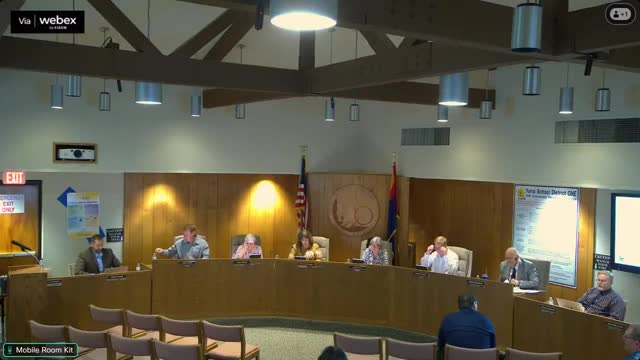District funding analysis reveals significant disparities per student
September 10, 2024 | Yuma Elementary District (4499), School Districts, Arizona
This article was created by AI summarizing key points discussed. AI makes mistakes, so for full details and context, please refer to the video of the full meeting. Please report any errors so we can fix them. Report an error »

During a recent government meeting, officials provided a detailed overview of per pupil funding in the district, highlighting the complexities of school financing and the disparities between district and charter schools. The discussion centered around a report from the Joint Legislative Budget Committee (JLBC) issued in August 2023, which utilized fiscal year 2022 data to analyze funding structures.
According to the report, public school districts in Arizona received an average of $6,776 per pupil through the equalization formula, while charter schools averaged $7,901. The equalization formula aims to create funding equity across the state, compensating districts that do not generate sufficient local tax revenue. In the district discussed, local taxpayers contribute approximately 25% of the funding, with the remaining 75% sourced from state aid.
The meeting also addressed the base support level, which was reported at $4,390 for elementary and middle schools, while the district's own calculations indicated a lower average of $4,482 per student. This discrepancy was attributed to variations in student demographics and the higher costs associated with educating high school students.
Transportation and district additional assistance funding were also examined, revealing that the district received about $128 per student for transportation, slightly below the state average. The district's overall funding per pupil was noted to be approximately $5,000, significantly lower than the state average of $6,700.
The conversation further explored the impact of local overrides and desegregation funding, which can significantly alter funding levels for different districts. Local overrides allow districts to exceed budget limits with taxpayer approval, while desegregation funding is allocated based on historical needs.
In conclusion, the meeting underscored the ongoing challenges of equitable school funding in Arizona, emphasizing the need for continued dialogue and potential reforms to ensure all students receive adequate educational resources. The officials encouraged further questions and discussions on the topic, indicating a commitment to transparency and community engagement in the funding process.
According to the report, public school districts in Arizona received an average of $6,776 per pupil through the equalization formula, while charter schools averaged $7,901. The equalization formula aims to create funding equity across the state, compensating districts that do not generate sufficient local tax revenue. In the district discussed, local taxpayers contribute approximately 25% of the funding, with the remaining 75% sourced from state aid.
The meeting also addressed the base support level, which was reported at $4,390 for elementary and middle schools, while the district's own calculations indicated a lower average of $4,482 per student. This discrepancy was attributed to variations in student demographics and the higher costs associated with educating high school students.
Transportation and district additional assistance funding were also examined, revealing that the district received about $128 per student for transportation, slightly below the state average. The district's overall funding per pupil was noted to be approximately $5,000, significantly lower than the state average of $6,700.
The conversation further explored the impact of local overrides and desegregation funding, which can significantly alter funding levels for different districts. Local overrides allow districts to exceed budget limits with taxpayer approval, while desegregation funding is allocated based on historical needs.
In conclusion, the meeting underscored the ongoing challenges of equitable school funding in Arizona, emphasizing the need for continued dialogue and potential reforms to ensure all students receive adequate educational resources. The officials encouraged further questions and discussions on the topic, indicating a commitment to transparency and community engagement in the funding process.
View full meeting
This article is based on a recent meeting—watch the full video and explore the complete transcript for deeper insights into the discussion.
View full meeting
